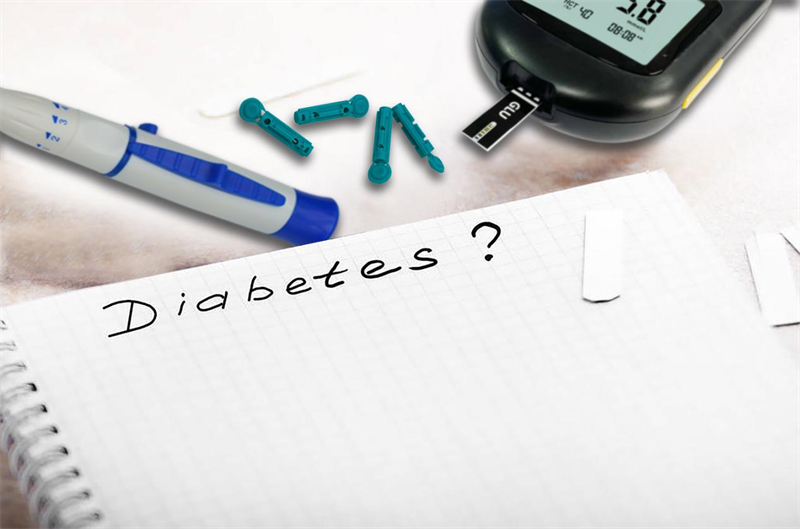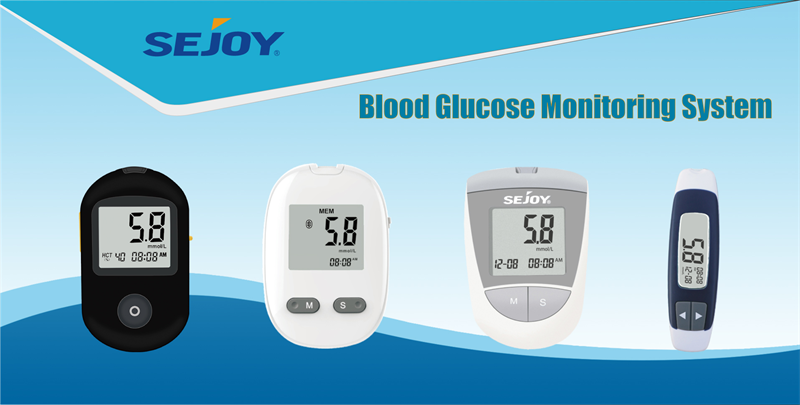1.what is blood sugar?
Blood glucose, also referred to as blood sugar, is the amount of glucose in your blood. This glucose comes from what you eat and drink and the body also releases stored glucose from your liver and muscles.

2.Blood glucose level
The glycaemia, also known as blood sugar level, blood sugar concentration, or blood glucose level is the measure of glucose concentrated in the blood of humans or other animals. Approximately 4 grams of glucose, a simple sugar, is present in the blood of a 70 kg (154 lb) human at all times. The body tightly regulates blood glucose levels as a part of metabolic homeostasis. Glucose is stored in skeletal muscle and liver cells in the form of glycogen; in fasting individuals, blood glucose is maintained at a constant level at the expense of glycogen stores in the liver and skeletal muscle.
In humans, a blood glucose level of 4 grams, or about a teaspoon, is critical for normal function in a number of tissues, and the human brain consumes approximately 60% of blood glucose in fasting, sedentary individuals. A persistent elevation in blood glucose leads to glucose toxicity, which contributes to cell dysfunction and the pathology grouped together as complications of diabetes. Glucose can be transported from the intestines or liver to other tissues in the body via the bloodstream.Cellular glucose uptake is primarily regulated by insulin, a hormone produced in the pancreas.
Glucose levels are usually lowest in the morning, before the first meal of the day, and rise after meals for an hour or two by a few millimoles. Blood sugar levels outside the normal range may be an indicator of a medical condition. A persistently high level is referred to as hyperglycemia; low levels are referred to as hypoglycemia. Diabetes mellitus is characterized by persistent hyperglycemia from any of several causes, and it is the most prominent disease related to the failure of blood sugar regulation.
3.Blood sugar levels in diagnosing diabetes
Understanding blood glucose level ranges can be a key part of diabetes self-management.
This page states ‘normal’ blood sugar ranges and blood sugar ranges for adults and children with type 1 diabetes, type 2 diabetes and blood sugar ranges to determine people with diabetes.
If a person with diabetes has a meter, test strips and is testing, it’s important to know what the blood glucose level means.
Recommended blood glucose levels have a degree of interpretation for every individual and you should discuss this with your healthcare team.
In addition, women may be set target blood sugar levels during pregnancy.
The following ranges are guidelines provided by the National Institute for Clinical Excellence (NICE) but each individual’s target range should be agreed by their doctor or diabetic consultant.
4.Normal and diabetic blood sugar ranges
For the majority of healthy individuals, normal blood sugar levels are as follows:
Between 4.0 to 5.4 mmol/L (72 to 99 mg/dL) when fasting [361]
Up to 7.8 mmol/L (140 mg/dL) 2 hours after eating
For people with diabetes, blood sugar level targets are as follows:
Before meals : 4 to 7 mmol/L for people with type 1 or type 2 diabetes
After meals : under 9 mmol/L for people with type 1 diabetes and under 8.5mmol/L for people with type 2 diabetes

5.Ways to diagnosing diabetes
Random plasma glucose test
A blood sample for a random plasma glucose test can be taken at any time. This doesn’t require as much planning and is therefore used in the diagnosis of type 1 diabetes when time is of the essence.
Fasting plasma glucose test
A fasting plasma glucose test is taken after at least eight hours of fasting and is therefore usually taken in the morning.
The NICE guidelines regard a fasting plasma glucose result of 5.5 to 6.9 mmol/l as putting someone at higher risk of developing type 2 diabetes, particularly when accompanied by other risk factors for type 2 diabetes.
Oral Glucose Tolerance Test (OGTT)
An oral glucose tolerance test involves first taking a fasting sample of blood and then taking a very sweet drink containing 75g of glucose.
After having this drink you need to stay at rest until a further blood sample is taken after 2 hours.
HbA1c test for diabetes diagnosis
An HbA1c test does not directly measure the level of blood glucose, however, the result of the test is influenced by how high or low your blood glucose levels have tended to be over a period of 2 to 3 months.
Indications of diabetes or prediabetes are given under the following conditions:
Normal: Below 42 mmol/mol (6.0%)
Prediabetes: 42 to 47 mmol/mol (6.0 to 6.4%)
Diabetes: 48 mmol/mol (6.5% or over)
Post time: Apr-19-2022


